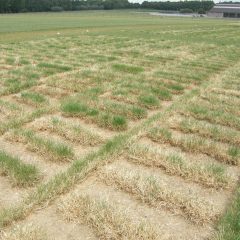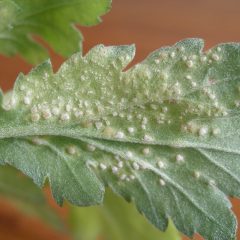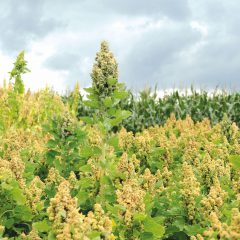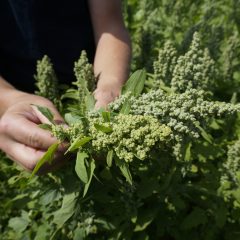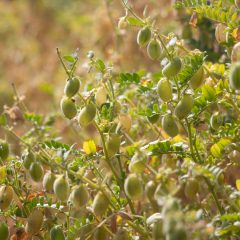Research project CurtoALERT - Curtobacterium flaccumfaciens pv. flaccumfaciens awakening in the expanding grain legume sector – a real threat?
Curtobacterium flaccumfaciens pv. flaccumfaciens shows up in the growing grain legume sector – a real threat?

General introduction
Plant-based proteins are indispensable components of animal feed and are gaining importance in human nutrition as alternatives to animal proteins. They are often sourced from members of the Fabaceae family, including green and dry/field bean (Phaseolus vulgaris, Vicia faba) and pea (Pisum sativum), soybean (Glycine max), lentil (Lens culinaris) and chickpea (Cicer arietinum).
In particular, the cultivation of protein crops harvested for dry grain – a.k.a. pulses – and of soybean is currently on the rise in Belgium. This expansion of the sector, however, also entails an increased risk of introducing (new) plant pathogens. One of the pathogens that needs to be closely monitored is Curtobacterium flaccumfaciens pv. flaccumfaciens (Cff). This gram-positive bacterium spreads through the vascular tissue of its host and causes leaf flaccidity, necrosis, wilt, stunted growth and seed discolouration in several wild and cultivated leguminous species. Well-known manifestations of the disease are bacterial wilt in common bean and bacterial tan spot in soybean. Cff is listed in the European Plant Health Law as a quarantine organism not known to occur in the EU territory and must be prevented from entering the EU.
The CurtoALERT project, coordinated by ILVO, was initiated following the isolation of Cff from field beans in a variety trial conducted on ILVO premises in 2021. CurtoALERT aims to shed light on the phytosanitary status of Cff in Belgium by collecting national data on its occurrence in leguminous crops, with a focus on soybean and pulses. Additionally, the project will develop or validate new or existing tools for the diagnostics and identification of Cff from plant material and seeds.
Research approach
Within the first work package (WP1), a survey will be conducted to provide data on the presence of Cff in cultivated grain legume species in Belgium. Both plant and seed samples will be screened. In WP2, several (molecular) tools for diagnosis and detection of Cff will be tested and optimised. Additionally, a protocol for the detection of Cff in seeds will be developed. In WP3, it will be evaluated how susceptible locally grown varieties/cultivars of leguminous crops are to Cff strains and to what extent the bacterium is transmitted from plant to seed, which constitutes the main dissemination pathway for Cff. Finally, within WP4, the gathered knowledge will be disseminated via targeted awareness campaigns.
Relevance/Valorization
The new EU Plant Health Law (Regulation (EU) 2016/2031) has broadened the quarantine status for Cff. While the bacterium was previously only regulated for Phaseolus and Dolichos seed in certain protected zones, the new regulation now applies to the entire EU territory without specifications as to a particular plant part or crop. This has implications for plant health inspection and seed certification of these crops.
Up-to-date figures on the presence of Cff in grain legume species in Belgium, obtained via CurtoALERT, will resolve the pathogen’s status. These status data, in turn, will underpin incorporation of Cff in phytosanitary inspection and control procedures by the National Plant Protection Organisation (NPPO). Specific recommendations for standardised quality control procedures that comply with the new EU Plant Health Law will help the regulatory agencies to rapidly implement measures to prevent introduction and spread of Cff in Belgium. Furthermore, gained insights may be an incentive to initiate an extensive pest risk analysis.
Finally, we hope to raise awareness among seed companies of the importance of certifying that their products are free from Cff inoculum.
Financing
FOD Volksgezondheid, Veiligheid van de voedselketen en Leefmilieu


